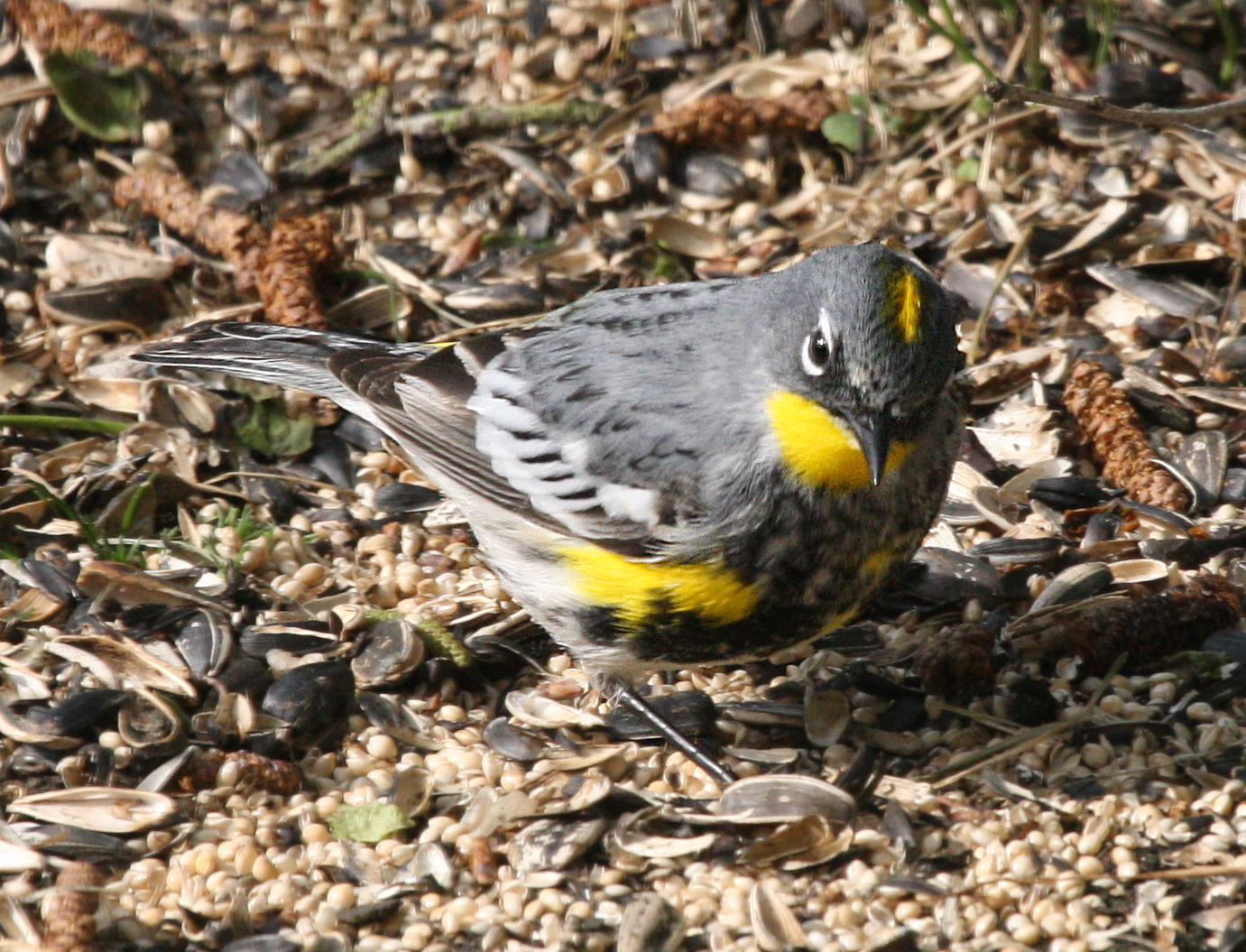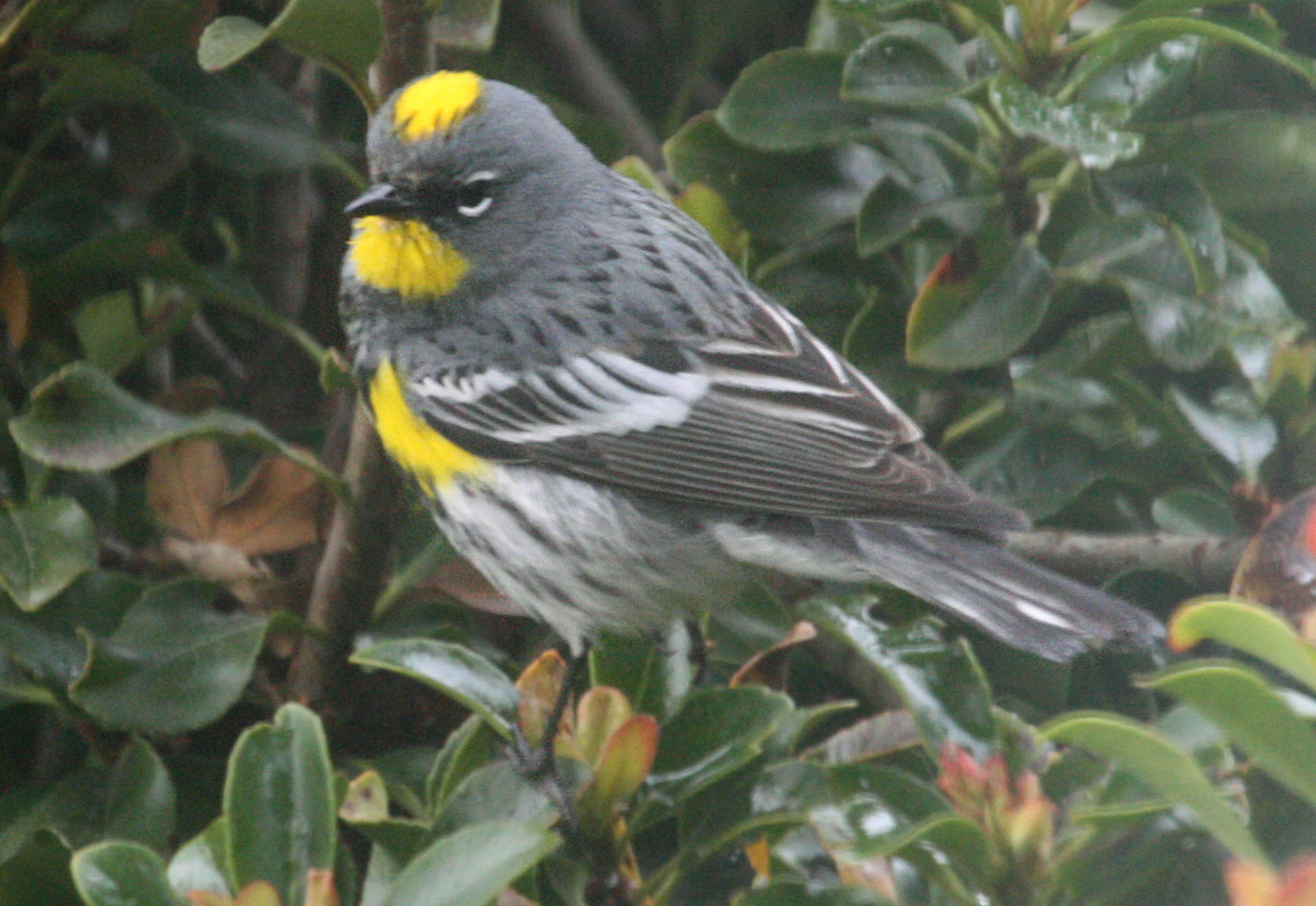

The song is similar to that of the northern parula, but distinguishable in that it was noticeably monotone.
#Yellow rumped warbler audubon series
Voice ĭocumented examples of the species' songs are composed of a rapid series of six to twenty-five buzz notes, sometimes ending in a sharp, slurred zip note. The legs are a grayish-brown, while the eyes are dark brown. The Bachman's warbler's bill is blackish brown in adults and brown in the juveniles. It is unique amongst warblers for its thin and decurved bill. It is relatively small for a warbler and has a short tail. This warbler is 4.25 inches (10.8 cm) in length.

Juvenile Bachman's warblers have a dusky brown head and upperparts and are a paler brown below, which transitions to dull white on the lower body and undertail. Hatchlings obtain their first plumage in May and undergo their first molt in June. Adult females possess the same plumage, although it looks fresher in the fall, while first year females have an olive-yellow forehead and a dull eyering. First year males also resemble their spring plumage, but have an olive forecrown and duller yellow underparts. For adult males, the fall plumage is nearly identical to the spring, with the only difference being that the forecrown changes from black to gray. īachman's warbler molts over the summer into its fall plumage. First spring females resemble the adult female, but appear duller. The rest of the breast and the belly is light yellow, blending into white on the undertail coverts. Older females have a few black upper breast feathers. The chin and throat are also a light yellow, while the sides of the neck and the upper breast are gray. The rest of the female's upperparts are an olive-green, which like the male is brightest on the rump.

Its lores are a gray-olive and it has a white eye ring. ĭuring the spring, adult females are a light yellow in their forehead and supraloral, blending into a gray crown and nape. Males in their first spring are nearly identical to the adult male, but have less black on their crown and chest. The belly is yellow, and the undertail coverts are white. The chin and upper throat are yellow, while the center throat and upper chest are black. The rest of the warbler's upperparts are an olive green, with the rump being the brightest. The bird's forecrown is black with gray at the edges, while the rear crown and nape are olive-gray. The area below the bird's eye is yellow, while the lores are a dusky olive. In the spring, adult males have a yellow forehead and supercilium. Male (above) and female, by Louis Agassiz Fuertesīachman's warbler is a sexually dimorphic species and the adults have two distinct plumages, one in the spring and one in the fall. The blue-winged and rapidly declining golden-winged warblers, also members of the genus Vermivora, are thought to be this warbler's closest relatives. Audubon never saw the bird alive but named it in honor of Bachman in 1833.

This bird was first recorded in 1832 by the Reverend John Bachman, who found the species near Charleston, South Carolina, and presented study skins and descriptions to his friend and collaborator, John James Audubon. Some authorities accept a sighting in Louisiana, in August 1988 as confirmed, but the last uncontroversial sightings date to the 1960s. There are some reports of the bird from the twenty-first century, but none are widely accepted. This warbler was a migrant, breeding in swampy blackberry and cane thickets of the Southeastern and Midwestern United States and wintering in Cuba. Bachman's warbler ( Vermivora bachmanii) is a likely extinct passerine migratory bird.


 0 kommentar(er)
0 kommentar(er)
